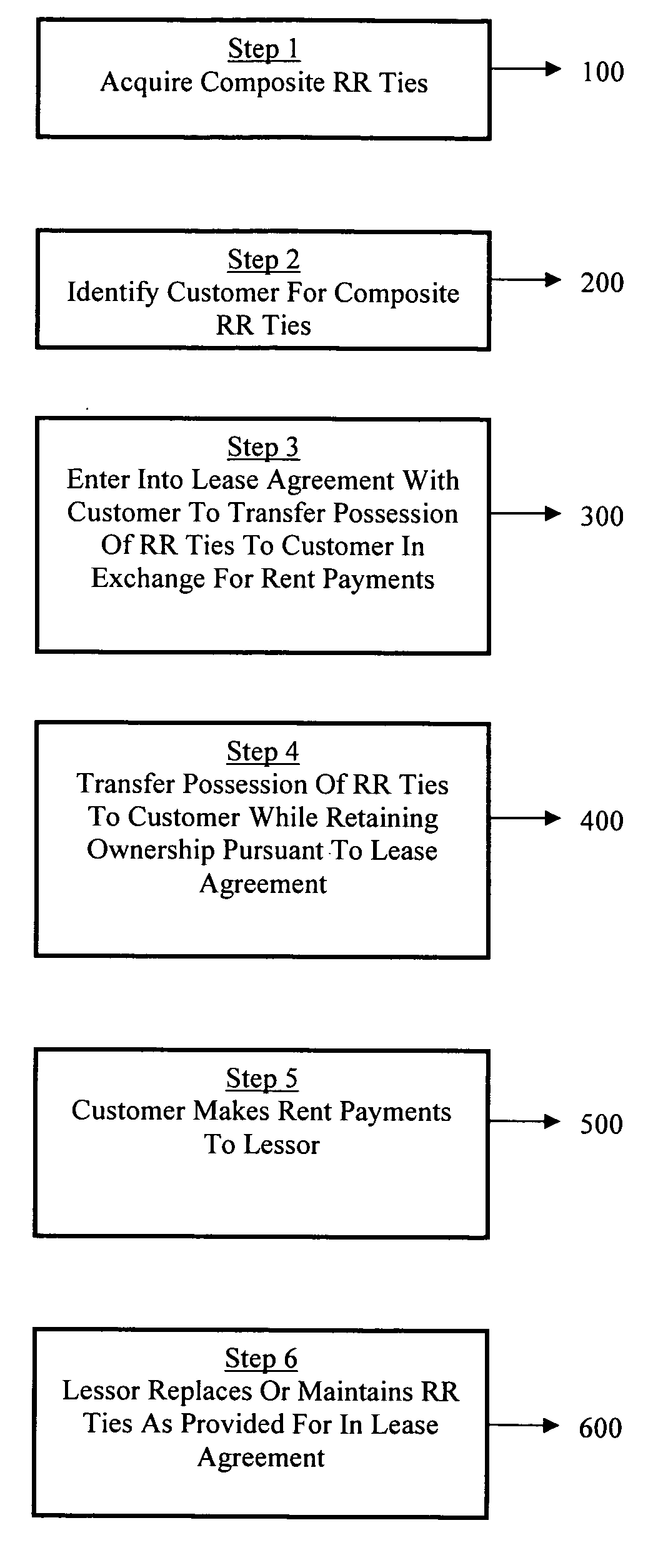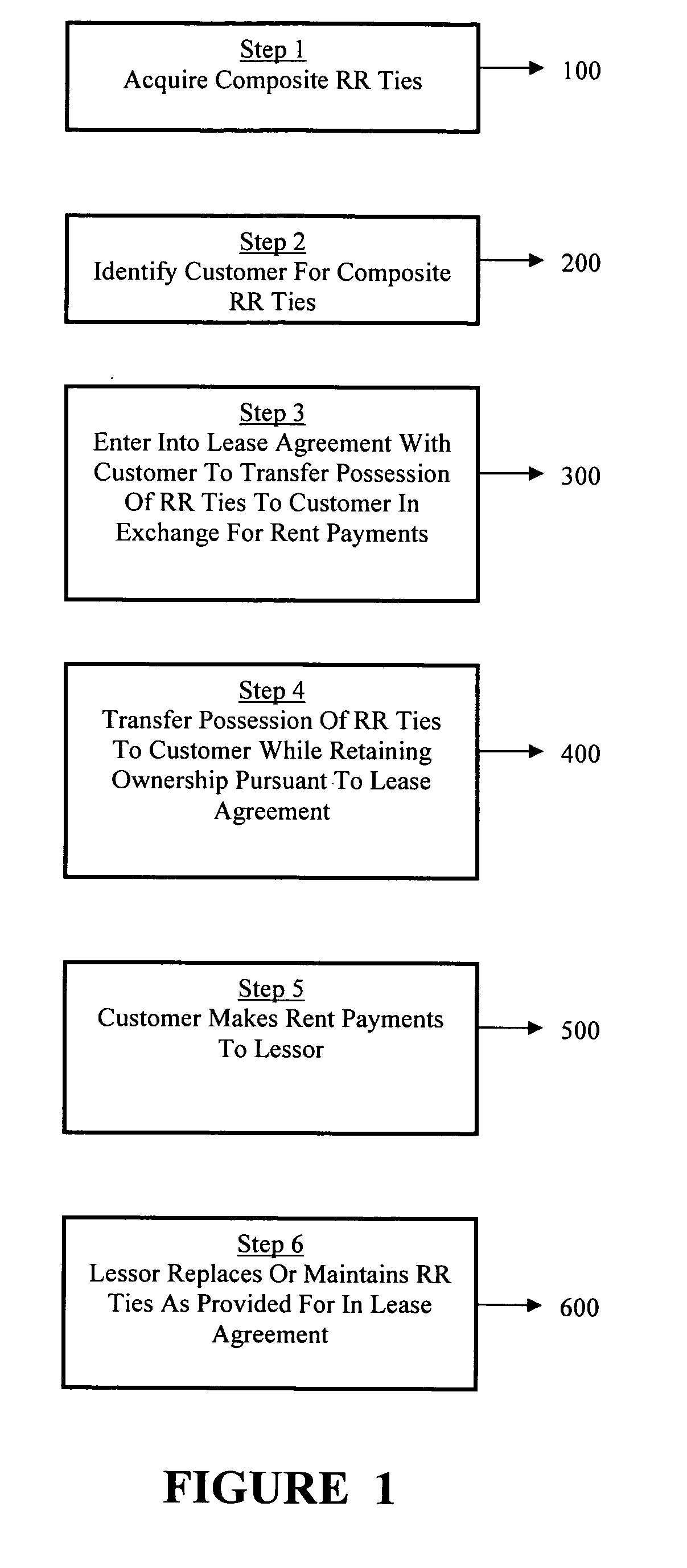Method of financing and maintaining a railway track
a technology of railway track and financing method, which is applied in the field of railway system financing and maintenance, can solve the problems of endangering both lives and property, the cost of the ties that support the rails and form the base of the track, and the inability to meet the needs of the railway system, so as to achieve enhanced durability of composite ties and low cost, without the inherent start-up cost
- Summary
- Abstract
- Description
- Claims
- Application Information
AI Technical Summary
Benefits of technology
Problems solved by technology
Method used
Image
Examples
Embodiment Construction
[0027]A lease is a contract through which an owner of equipment, the leassor, conveys the right to use its equipment to another party, the lessee, for a specified period of time and for specified periodic payments. A lease schedule is a schedule to a master lease agreement describing the leased equipment, rentals and other terms applicable to that equipment. A lease term is the fixed, non-cancelable duration of the lease. A lessee is the party to a lease agreement who has been given the right to use the equipment for the lease term by the party who has legal or tax title to the equipment and who is entitled to receive rental payments from the lessee. The leassor is the owner of equipment that is being leased to a lessee or user.
[0028]There are many benefits to a lessee / business for leasing certain equipment rather than purchasing. Some of these are the following:
[0029]Conserve Capital: By leasing equipment, the lessee can make better use of its working capital to meet the day-to-day...
PUM
 Login to View More
Login to View More Abstract
Description
Claims
Application Information
 Login to View More
Login to View More - R&D
- Intellectual Property
- Life Sciences
- Materials
- Tech Scout
- Unparalleled Data Quality
- Higher Quality Content
- 60% Fewer Hallucinations
Browse by: Latest US Patents, China's latest patents, Technical Efficacy Thesaurus, Application Domain, Technology Topic, Popular Technical Reports.
© 2025 PatSnap. All rights reserved.Legal|Privacy policy|Modern Slavery Act Transparency Statement|Sitemap|About US| Contact US: help@patsnap.com


